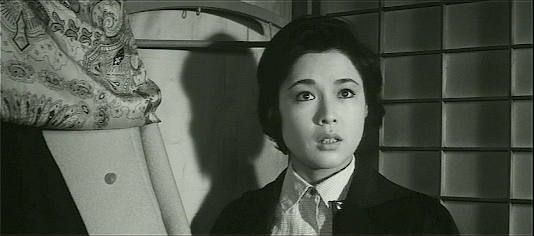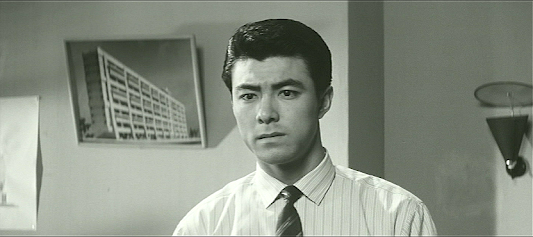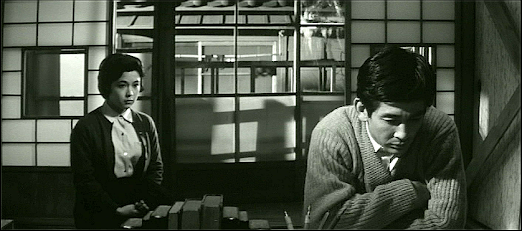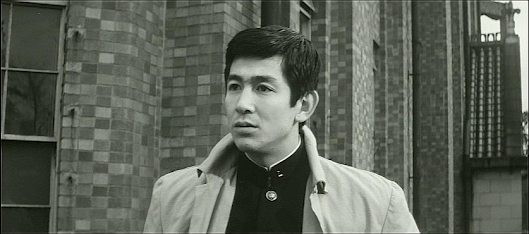Bara no ki ni bara no hana saku / 薔薇の木にバラの花咲く / (‘Roses Bloom on the Rose Bush’, 1959)
Obscure Japanese Film #136
 Ayako Wakao
Ayako Wakao Rieko Sumi and Ayako Wakao
Rieko Sumi and Ayako WakaoReiko (Ayako Wakao) isa senior university student majoring in English who gets a part-time jobtutoring junior student Mariko (Noriko Kubota). This is valuable income asReiko lost both parents in the war and the only family she has left is herelder sister, Ginko (Rieko Sumi), who has become involved with the no-good Nose(Manabu Morita) and ended up working in the red light district.
One day at Mariko’shouse, Reiko meets a young architect, Fuyuhiko (Jiro Tamiya), who isimmediately attracted to her. Coming from a wealthy family and used to havinghis own way, he pursues her relentlessly until his persistence pays off. Reikobegins a relationship with him which soon leads to talk of marriage. However,there is also the matter of Reiko’s sister, whose status would make the matchunacceptable to Fuyuhiko’s family, as well as Reiko’s friendship with fellowstudent Narumi (Keizo Kawasaki), who loves her but has so far kept his feelingsto himself…
This Daiei productionwas based on a novel of the same name by Yoshiko Shibaki, whose work had alsoformed the basis of Mizoguchi’s Akasenchitai and Yuzo Kawashima’s lesser-known but excellent Suzaki Paradise (both 1956), both of which were stories of the redlight district. Like those films, this is also concerned with people who havefound themselves marginalised by society partly due to economics, but here thered light district is a minor element and the main focus is on social status,or the class divide, a theme seldom dealt with in Japanese films as explicitlyas it is here.

The director wasHiroshi Edagawa (1916-2010), a filmmaker credited with just two feature filmson IMDb, but who actually directed 31 features between 1950 and 1965 beforefinishing his career in TV, which shows just how much info is still missing onIMDb. Not having seen any of his other films, I can’t say how this onecompares, but his work here is more than competent and he succeeds indelivering a satisfying and affecting Naruse-like relationship drama with goodperformances all round.
The characters here actuallyresemble real people – Jiro Tamiya’s, for instance, could easily have been aone-dimensional spoilt rich kid type, but is portrayed as having both positiveand negative traits, while Ayako Wakao’s heroine is also shown to have her ownflaws (embarrassed by her sister, she later comes to realise how lucky she isto have her). This unusual attention to character is probably why I foundmyself so drawn into the story and caring about what happened to the fictionalpeople on screen. Given the obscurity of both film and director, I didn’t expect much from this, but I have to say I was very pleasantlysurprised and warmly recommend it.

Thanks to A.K.






